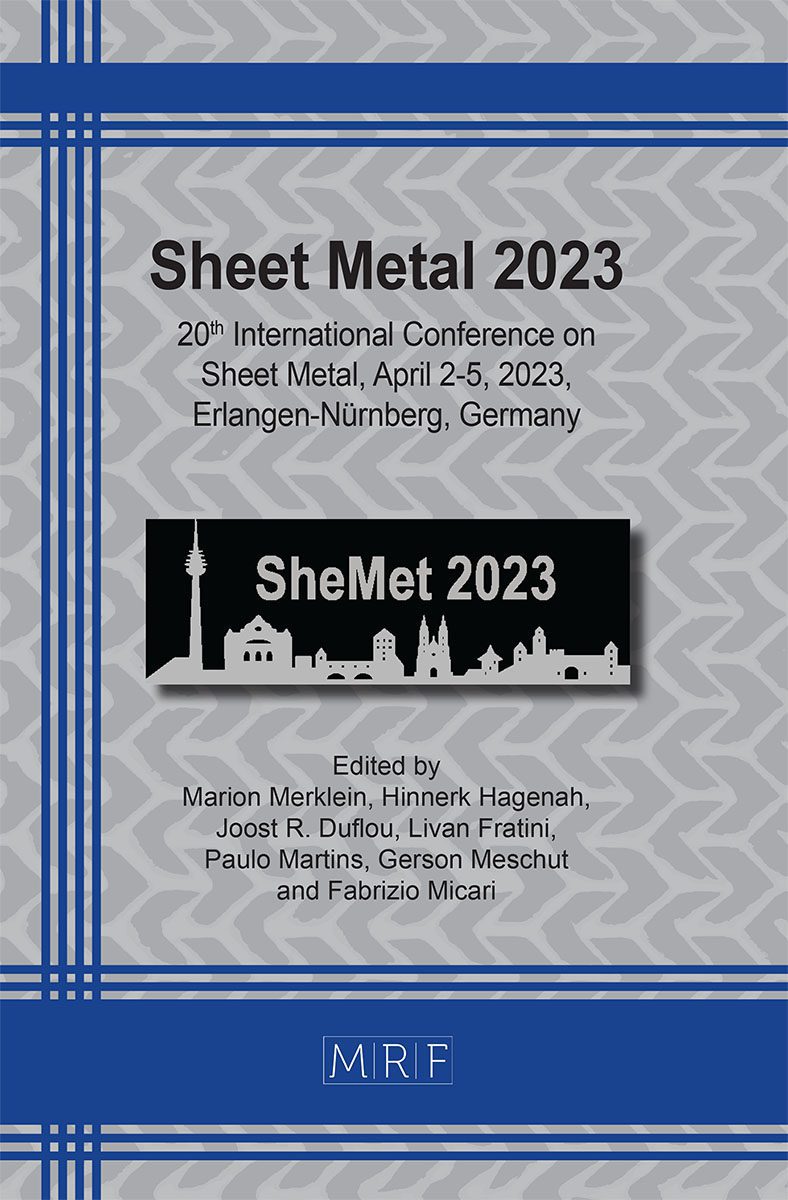Numerical model design for accuracy prediction of parts made by hybrid incremental sheet forming
Giuseppina Ambrogio, Giuseppe Serratore, Luigino Filice, Fabrizio Micari
download PDFAbstract. Hybrid manufacturing is a promising approach which helps to efficiently improve the performance of conventional manufacturing processes, just contemporary considering different technologies. The suitable combination of Incremental Sheet Forming (ISF) with subtractive or additive processes has been already demonstrated in the past as alternative approach to compensate excessive thinning or low accuracy of the produced parts. Focusing on the last solution, based on the coupled use of ISF and Additive Manufacturing (AM), a new challenge related to the design of a robust numerical model able to predict the behavior of the hybrid-material is still open. In this paper, this issue has been considered and an experimental-numerical validation is proposed.
Keywords
Incremental Sheet Forming, Finite Element Method (FEM), Hybrid Manufacturing
Published online 3/17/2023, 6 pages
Copyright © 2023 by the author(s)
Published under license by Materials Research Forum LLC., Millersville PA, USA
Citation: Giuseppina Ambrogio, Giuseppe Serratore, Luigino Filice, Fabrizio Micari, Numerical model design for accuracy prediction of parts made by hybrid incremental sheet forming, Materials Research Proceedings, Vol. 25, pp 93-98, 2023
DOI: https://doi.org/10.21741/9781644902417-12
The article was published as article 12 of the book Sheet Metal 2023
![]() Content from this work may be used under the terms of the Creative Commons Attribution 3.0 licence. Any further distribution of this work must maintain attribution to the author(s) and the title of the work, journal citation and DOI.
Content from this work may be used under the terms of the Creative Commons Attribution 3.0 licence. Any further distribution of this work must maintain attribution to the author(s) and the title of the work, journal citation and DOI.
References
[1] G. Da Silveira, D. Borenstein, F.S. Fogliatto, Mass customization: Literature review and research directions, Int. J. Prod. Econ., 72 (2001) 1–13. https://doi.org/10.1016/S0925-5273(00)00079-7
[2] D. Deradjat, T. Minshall, Decision trees for implementing rapid manufacturing for mass customisation, CIRP J. Manuf. Sci. Technol., 23 (2018) 156–171. https://doi.org/10.1016/j.cirpj.2017.12.003
[3] S. Matsubara, Incremental backward bulge forming of a sheet metal with a hemispherical head tool-a study of a numerical control forming system II, J. Japan Soc. Technol. Plast., 35 (1994) 1311–1316.
[4] M. Amino, M. Mizoguchi, Y. Terauchi, T. Maki, Current Status of “Dieless” Amino’s Incremental Forming, Procedia Eng., 81 (2014) 54–62. https://doi.org/10.1016/j.proeng.2014.09.128
[5] J. Jeswiet, F. Micari, G. Hirt, A. Bramley, J. Duflou, J. Allwood, Asymmetric Single Point Incremental Forming of Sheet Metal, CIRP Ann., 54 (2005) 88–114. https://doi.org/10.1016/S0007-8506(07)60021-3
[6] M. Srivastava, S. Rathee, V. Patel, A. Kumar, P. Koppad, A review of various materials for additive manufacturing: recent trends and processing issues, J. Mater. Res. Technol., (2022). https://doi.org/10.1016/j.jmrt.2022.10.015
[7] M. Srivastava, S. Rathee, S. Maheshwari, T.K. Kundra, Additive manufacturing: fundamentals and advancements, CRC Press., 2019. https://doi.org/10.1201/9781351049382
[8] G. Schuh, J. Kreysa, S. Orilski, Roadmap „Hybride Produktion“, Zeitschrift Für Wirtschaftlichen Fabrikbetr., 104 (2009) 385–391. https://doi.org/10.3139/104.110072
[9] B. Lauwers, F. Klocke, A. Klink, A.E. Tekkaya, R. Neugebauer, D. Mcintosh, Hybrid processes in manufacturing, CIRP Ann., 63 (2014) 561–583. https://doi.org/10.1016/j.cirp.2014.05.003
[10] G. Ambrogio, F. Gagliardi, M. Muzzupappa, L. Filice, Additive-incremental forming hybrid manufacturing technique to improve customised part performance, J. Manuf. Process., 37 (2019) 386–391. https://doi.org/10.1016/j.jmapro.2018.12.008































